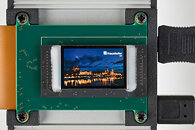
Qualcomm's Snapdragon 8 Gen 2 Defines a New Standard for Premium Smartphones
During the Snapdragon Summit 2022, Qualcomm Technologies, Inc. introduced its latest premium mobile platform, Snapdragon 8 Gen 2. The Snapdragon 8 Gen 2 Mobile Platform will define a new standard for connected computing, intelligently engineered with groundbreaking AI across the board to enable extraordinary experiences. This new mobile platform will be adopted by global OEMs and brands including ASUS Republic of Gamers, HONOR, iQOO, Motorola, nubia, OnePlus, OPPO, REDMAGIC, Redmi, SHARP, Sony Corporation, vivo, Xiaomi, XINGJI/MEIZU, and ZTE, with the first commercial devices expected by the end of 2022.
"We are passionate about enabling people to do more, so we design Snapdragon with the user at the center. Snapdragon 8 Gen 2, will revolutionize the landscape of flagship smartphones in 2023," said Chris Patrick, senior vice president and general manager of mobile handsets, Qualcomm Technologies, Inc. "Snapdragon 8 Gen 2 delivers groundbreaking AI, unparalleled connectivity, and champion-level gameplay, enabling consumers to enhance every experience on their most trusted device."
"We are passionate about enabling people to do more, so we design Snapdragon with the user at the center. Snapdragon 8 Gen 2, will revolutionize the landscape of flagship smartphones in 2023," said Chris Patrick, senior vice president and general manager of mobile handsets, Qualcomm Technologies, Inc. "Snapdragon 8 Gen 2 delivers groundbreaking AI, unparalleled connectivity, and champion-level gameplay, enabling consumers to enhance every experience on their most trusted device."











































